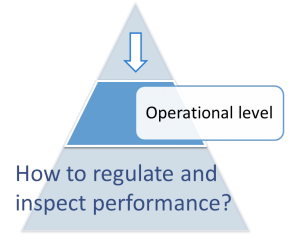A brief and general history of regulation
Course subject(s)
Module 4: Governance and Regulation in complex situation
A brief and general history of regulation
In the early and mid twentieth century many countries, especially in the developing world, sought to provide utility services by forming state-owned monopolies. By the latter part of the century, it became clear that state-owned monopolies were generally inefficient providers of utility services and ineffective in making these services broadly available to the public. Micro-management from politically-motivated government officials led state-owned operators to have excessive numbers of employees, provide services primarily to politically powerful groups, cross-subsidize services, and charge non-commercially viable prices.
Weak institutions allowed two types of political opportunism. In some instances, prices were kept artificially low so that state-owned operators needed government subsidies to finance investments and cover other costs. If fiscal constraints prevented the government from providing the subsidies consistently, then there was under investment and poor service quality. In other instances, the utility services would be used as cash cows to fund other government functions. This also resulted in under investment and poor service quality for the utility services.
Privatization leads to regulation
During the 1980s and 1990s, policy makers began to conclude that regulated, privately-owned service providers might be more effective than state-owned operators. Private operators might be less subject to political opportunism and were expected to operate more efficient than state-owned enterprises, especially if subjected to competitive pressures. Profit motives provide clear and consistent incentives to control costs, deploy infrastructures where demand is sufficient to cover costs, offer prices that encourage efficient utilization of infrastructures and innovate when customers find the innovation sufficiently valuable to pay for the improvement. As part of this trend, countries began to introduce competition wherever possible and developed utility regulatory agencies that would enforce concession or licensing agreements and regulate prices. As a result, over the last decades there has been a huge growth in the number of infrastructure regulators established in developing countries, as well as countries in Europe, Australasia and elsewhere in the OECD. Worldwide more than 200 have been created since 1995, primarily for telecommunications and electricity (and/or natural gas), and a smaller number in water and transport. Telecommunication is typically the first sector for which countries establish a regulatory entity. 
However, the shape of market reform has varied across sectors and countries. As mentioned above, in telecommunications, liberalization and privatization have been the most prevalent features of market reform, although countries have varied in their degrees of market liberalization and privatization. Telecommunications regulators and policymakers have generally focused on removing barriers to entry, ensuring efficient network interconnection, rebalancing prices to reflect new competitive realities, and promoting access to telecommunications for the poor and in rural areas. In the electricity sector, industry restructuring and commercialization (sometimes through privatization) have been the most prevalent market reforms.
Structural separation
Restructuring has sometimes involved structural separation that separates the sector into competitive generating companies and monopoly transmission and distribution companies. Establishing efficient market mechanisms for electricity has been particularly challenging. Markets for natural gas have experienced reforms along the lines of some electricity reforms – production and transport are separated from distribution, gas production has been opened to competition, and gas distribution is typically left to a local monopoly. Water reforms have varied greatly, ranging from complete privatizations as in the case of the U.K., to build-operate-transfer arrangements, to private management contracts, to incentive systems for state-owned monopolies.
All in all, regulation has been facing some major developments, leading to major challenges. And these developments and challenges differ all over the world. Have a look at the next video for a further introduction into the nature of regulation and the development it has been going through.

Next Generation Infrastructures by TU Delft OpenCourseWare is licensed under a Creative Commons Attribution-NonCommercial-ShareAlike 4.0 International License.
Based on a work at https://ocw.tudelft.nl/courses/next-generation-infrastructures/.



